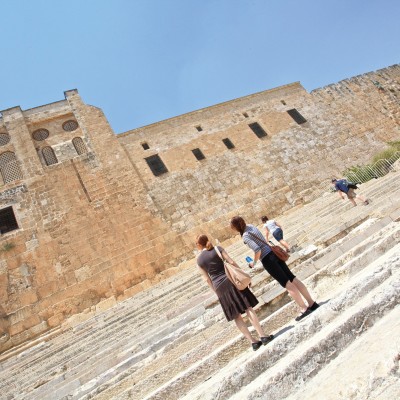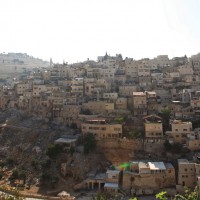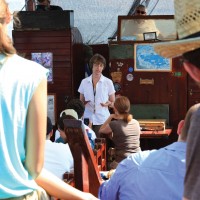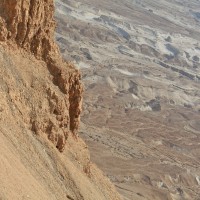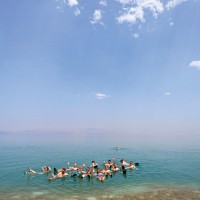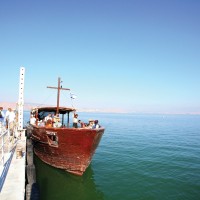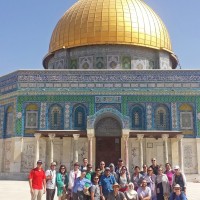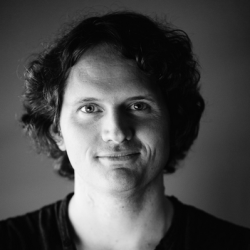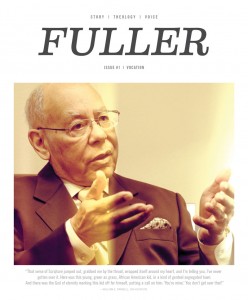
It’s Why They’re Called Intensives
Months’ worth of two-hour, MWF classes jammed into two weeks: sounds exhausting. Yet the benefits of intensive courses, especially when immersed in context, are familiar to many. Time away from routine life with heightened focus; opportunities to percolate while all five senses are engaged; hours of late-night conversations mixing students and faculty and administrators and trustees; food and drink and laughter and prayers and the letting down of hair, literal and figurative. A well-guided immersion experience can open the self to full-bodied learning in a unique way, forging a deeper story, making unique bonds, refining paths of ministry. Exhausting, yes.
That’s why they’re called intensives.
Across Fuller there are many opportunities for intensives: as part of online learning structures; as immersion trips to Italy, Israel and Palestine, Costa Rica, Turkey and Greece, and Ireland; as excursions to events such as the Sundance Film Festival, SXSW Film, Music, and Interactive Festival, or the theater in New York City. It’s intriguing to reflect on the chemistry that gives these marathon events so much power for connection and change, so we’re going to consider that over the next few issues of the magazine, starting with a reflection from scholar Chris Hays on how a trip to Israel can transform from “sight-seeing to story-forging.”
—From the Editor
A trip to the Holy Land should take you deep. You are not in shallow waters when you contemplate the ancient and modern issues raised by such a trip. That’s why you go with teachers and guides who are comfortable with the depths—just as you would on a scuba dive.
It might not seem like such a big deal. After all, it seems like everyone is going to Israel and Palestine lately. When I tell someone that we’re taking a trip from Fuller, I usually hear that they would like to go, and that they know people who’ve been. Most often it’s with a church. I worry about these trips, because I listen in on other groups, and wow: Their guides tell them some wild things. [Professor of New Testament] Marianne Meye Thompson and I lead Fuller groups, and students get used to watching us to see if we raise our eyebrows at each other. Marianne says, “A large part of what we do on our trips is teach students which things to take with a grain of salt, which things are plausible, and how they might know the difference. We teach them to ask good questions.”
It’s not just about information, but about the whole shape of a trip. A scholarly approach allows us to widen our scope, to appreciate deeply the sites that are not starred in every guidebook. Some of the most interesting sights in the Middle East are completely off the radar of tour companies. You might stand by the ruined fortress city of Lachish at midday—alone during tourist season—and still be able to see the massive Assyrian siege ramp, to understand why Judeans lived in fear in the eighth century, and why Assyrian king Sennacherib memorialized his defeat of this city with reliefs carved all over his palace walls.
Marianne teaches on the southern steps of the Temple Mount. I watch as students light up when they realize where they are. This is one of the few places where you can stand on stones where Jesus walked, and yet it’s lightly touristed in our experience. The place is remarkable, yet there is no signage to identify its significance, no markers to inform your tracks. (The state of Israel likes having Christians visit, but does not invest much in telling the story of Jesus.) It is these places without explanatory videos or historical markers, without pilgrim paths or souvenir shops, that we can encounter as students.
I remember a visit to Qumran, where the Dead Sea Scrolls, the oldest biblical manuscripts known to exist, were found. In the visitors’ center, there was a large gift shop and a cafeteria, which were packed. There were probably 500 people in the complex. Tour buses were stacked like cordwood in the parking lot. But outside, on the archaeological site, only a few small groups circulated. Most didn’t even pause to examine the “scriptorium,” where the scrolls were likely copied. This site changed the way we think about the formation of the biblical writings, and the canon as a whole, but even the air-conditioned museum dedicated to the scrolls is often deserted, apparently offering no competition for spa products and cold sodas. By contrast, our Fuller group had toured Jerusalem’s Shrine of the Book, where the Dead Sea Scrolls are now held, guided by a member of the scrolls’ original editorial team, so they knew exactly what they were looking at.
A scholarly approach means that you know the right people. We often know the directors of the archaeological digs that we visit, and we have benefited from some wonderful tours that brought alive the stones and soil of ancient sites. (Of course, it’s not all scholarly . . . we also found time on our last trip to watch World Cup soccer in the Old City of Jerusalem, go to a water park in the Galilee, and soak up some rays on the beach in Tel Aviv. Knowing how to have fun matters, too.)
A scholarly approach also allows us to think for ourselves. A theological school is in a uniquely propitious position to do Holy Land tourism better—primarily because we have motivated students who are willing to put in the study time to make a trip transcend the average and become more meaningful. It’s especially hard to think for yourself when it comes to the modern political situation, when you have interests on both sides shouting at you in support of their viewpoint. We have recognized that the modern situation requires attention on any trip to the Middle East, and have worked hard to address it in ways that do justice to its complexity. We let the students hear perspectives from both Israelis and Palestinians, we have Christian, Jewish, and Muslim guides, and our primary lodging is literally on the border between Israel and the West Bank.
A trip to the Holy Land, if done well, is less about sight-seeing and more about story-forging. It is relatively easy to purchase a trip and consume a story—the same story that nearly everyone else gets. It is more difficult to read, listen, and prepare for such a trip, but it allows you to be a participant instead of a consumer. Like any good Fuller course, ours gives you the tools to think critically. And going deep allows the Bible and the land to inhabit your thoughts and words in fresh ways.

